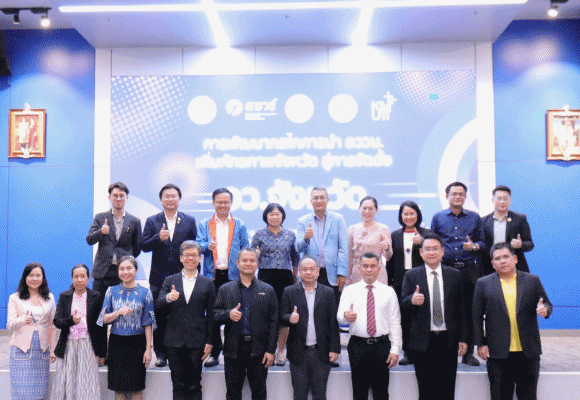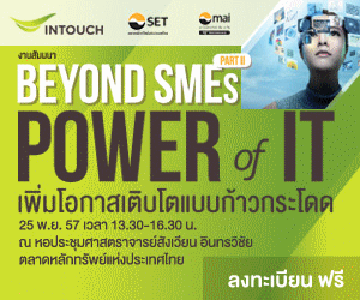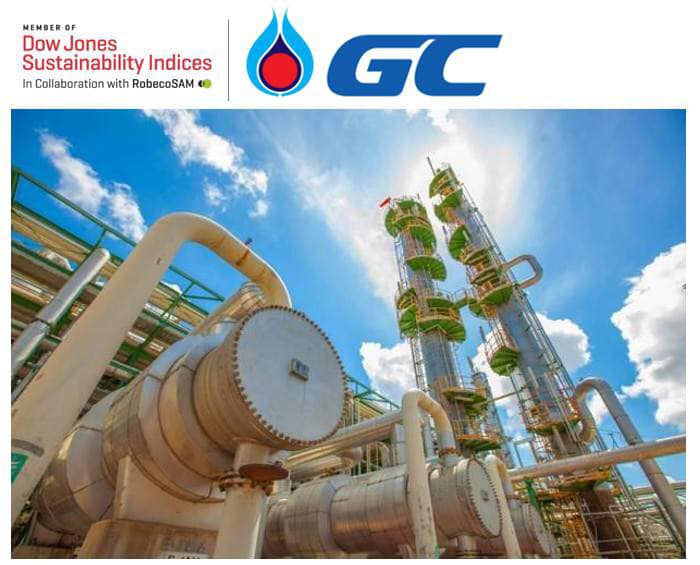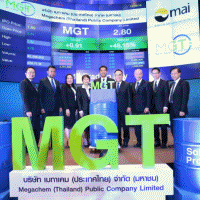- Details
- Category: บทความการเงิน
- Created: Saturday, 27 August 2016 10:21
- Hits: 5336
 รถยนต์ไฟฟ้า...ก้าวย่างสู่การพลิกโฉมวงการรถยนต์ไทย
รถยนต์ไฟฟ้า...ก้าวย่างสู่การพลิกโฉมวงการรถยนต์ไทย
Highlight
รถยนต์ไฟฟ้าเป็น disruptive technology ที่ยังอยู่ในขั้นตอนการพัฒนา ด้วยขนาดของตลาดที่จำกัด ราคาที่สูง และความไม่พร้อมในโครงสร้างพื้นฐาน จึงยังไม่สามารถสร้างคุณค่าให้กับสินค้าเพื่อดึงดูดผู้บริโภค (value proposition) ได้อย่างรวดเร็วเมื่อเทียบกับ disruptive technology อื่นๆ เช่น สมาร์ทโฟน หรือกล้องดิจิตอล
อีไอซี มองว่า แม้ว่ารถยนต์ไฟฟ้ายังต้องใช้เวลากว่า 10 ปีจึงจะตีตลาดรถยนต์ไทยได้ แต่ผู้ผลิตชิ้นส่วนไทยต้องไม่นิ่งนอนใจโดยเฉพาะกลุ่มชิ้นส่วนเครื่องยนต์ที่อาจได้รับผลกระทบมากที่สุด ต้องเร่งพิจารณาหาโอกาสจากอุตสาหกรรมอื่นที่สอดคล้องกับจุดแข็งในธุรกิจของตน เพื่อกระจายความเสี่ยงหากตลาดรถยนต์ไฟฟ้าเกิดในไทยเร็วกว่าที่คาด
รถยนต์ไฟฟ้าเป็น disruptive technology ของรถยนต์แห่งอนาคตที่ยังอยู่ระหว่างการพัฒนาเพื่อผลักดันให้เกิดการเติบโตในระยะต่อไป เพราะการที่ disruptive technology จะเติบโตขึ้นได้นั้นต้องอาศัยปัจจัยทางด้านตลาด (social) ราคา (economics) และโครงสร้างพื้นฐาน (politics) ทั้งนี้ แม้ว่ารถยนต์ไฟฟ้าจะมีการผลิตและจำหน่ายมาแล้วกว่า 10 ปี แต่ด้วยราคาที่ยังสูงมาก เนื่องจากต้นทุนของแบตเตอรี่ที่ยังไม่สามารถพัฒนาให้ต่ำกว่า 150 ดอลลาร์สหรัฐฯ ต่อกิโลวัตต์-ชั่วโมง ทำให้รถยนต์ไฟฟ้าจึงยังไม่สามารถแข่งขันกับรถยนต์เครื่องยนต์สันดาปได้[1] โดยในปี 2015 ยอดขายของรถยนต์ไฟฟ้าอยู่ในสัดส่วนที่น้อยกว่า 1% ของยอดขายรถยนต์ทั่วโลก ทั้งนี้ ทาง Tesla ผู้ผลิตรถยนต์ไฟฟ้ารายใหญ่จึงต้องมีการลงทุนใน Gigafactory เพื่อตั้งเป้าลดต้นทุนแบตเตอรี่ให้เหลือ 100 ดอลลาร์สหรัฐฯ ต่อกิโลวัตต์-ชั่วโมง ให้ได้ภายในปี 2020 นอกจากนี้ การพัฒนาโครงสร้างพื้นฐานยังไม่เป็นไปในทางเดียวกัน ด้วยความหลายหลายในการพัฒนาเทคโนโลยีของรถยนต์ไฟฟ้า ทั้งชนิดของแบตเตอรี่ มาตรฐานของเต้ารับเต้าเสียบประจุไฟฟ้า หรือแม้แต่รูปแบบของเชื้อเพลิงพลังงาน เช่น ผู้ผลิตค่ายญี่ปุ่นอย่าง Toyota และ Honda ที่มุ่งเน้นไปที่การพัฒนาเทคโนโลยี hydrogen fuel cell หรือแนวคิดของ Daimler ที่ผสานการใช้ plug-in battery และ fuel cell ไว้ด้วยกัน
ในอดีตมี disruptive technology ซึ่งสามารถแทนที่คู่แข่งด้วยการสร้าง value propositionเพื่อดึงดูดให้ผู้บริโภคเปลี่ยนมาใช้ในเทคโนโลยีใหม่อย่างแพร่หลาย เช่น สมาร์ทโฟนของ Apple และ Samsung ที่เข้ามาแทนที่ Nokia จนทำให้ส่วนแบ่งทางการตลาดจากที่สูงถึง 50% เหลือเพียง 3% ภายใน 6 ปี โดย Apple ชูจุดเด่นในการสร้างนวัตกรรมที่แปลกใหม่พร้อมกับนำเสนอ user interface ที่เป็นมิตรแก่ผู้ใช้ ในขณะที่ Samsung นำเสนอผลิตภัณฑ์ที่ตอบสนองแก่ผู้บริโภคทุกระดับรายได้ อีกทั้ง เทคโนโลยีการถ่ายภาพด้วยกล้องดิจิตอลที่เริ่มผลิตให้กับผู้ใช้ทั่วไปครั้งแรกในปี 1995 สามารถเข้ามาแทนที่กล้องฟิล์มได้ใน 7 ปีต่อมา โดยที่ Kodak ผู้ผลิตฟิล์มอันดับ 1 ของโลกและเป็นผู้คิดค้นกล้องดิจิตอล ได้ละเลยการพัฒนาต่อยอดกล้องดิจิตอล เพราะเกรงว่าจะไปแย่งตลาดจากธุรกิจฟิล์มเดิม สุดท้ายแล้วทำให้ Kodak ต้องสูญเสียตลาดกล้องดิจิตอลให้กับผู้เล่นรายอื่น พร้อมๆ กับเทคโนโลยีฟิล์มที่ได้รับความนิยมน้อยลงเรื่อยๆ แม้กระทั่งการดูภาพยนตร์ streaming บนคอมพิวเตอร์หรือสมาร์ทโฟนที่สร้างความสะดวกสบายแก่ผู้บริโภคและมีราคาถูกได้เข้ามาแทนที่ CD หรือ DVD ด้วยการพัฒนาโครงสร้างพื้นฐานของอินเทอร์เน็ตจากระบบสายโทรศัพท์ความเร็วต่ำสู่อินเทอร์เน็ตความเร็วสูงอย่าง fiber optics และ 4G ทั้งนี้ ข้อสังเกตของลักษณะการเกิด disruptive technology ในช่วงต้นมักจะมีการเพิ่มปริมาณหรือขนาดตลาดอย่างช้าๆ แต่เมื่อถึงจุดที่สภาพแวดล้อมมีความพร้อมก็จะเติบโตได้อย่างรวดเร็ว
อีไอซีคาดว่าต้องใช้เวลาไม่น้อยกว่า 10 ปี รถยนต์ไฟฟ้าจึงจะสามารถเริ่มตีตลาดในไทยได้เพราะรถยนต์ไฟฟ้ายังไม่ได้พัฒนาถึงจุดที่จะทำให้เกิดความต้องการอย่างก้าวกระโดดในขณะนี้ ด้วยความหลากหลายในเทคโนโลยีของรถยนต์ไฟฟ้าที่ผู้ผลิตรถยนต์เองก็ยังไม่สามารถหาข้อสรุปที่ชัดเจนได้ว่าเทคโนโลยีชนิดไหนจะตอบโจทย์การใช้งานของผู้บริโภคได้ดีที่สุด ประกอบกับยังมีต้นทุนสูงซึ่งทำให้ต้องมีการพัฒนาเพื่อหาตัวเลือกต่อไป ตลอดจนนโยบายของไทยในปัจจุบันเป็นเพียงการสนับสนุนการผลิตรถยนต์ไฟฟ้าเพื่อเป็นทางเลือกให้กับผู้บริโภคเท่านั้น ทั้งนี้ อีไอซีจึงมองว่ายังไม่เพียงพอต่อการดึงดูดและสร้างความเชื่อมั่นว่าจะเกิดตลาดรถยนต์ไฟฟ้าในไทยให้แก่ผู้ผลิตรถยนต์ได้ อย่างไรก็ดี ด้วยรถยนต์เป็นสินค้าที่มีราคาสูง จึงมีผลต่อการตัดสินใจเลือกซื้อและเมื่อรวมถึงการพิจารณาถึงต้นทุนในการปรับเปลี่ยนไปใช้สินค้าอื่น (switching cost) จากข้อกังวลในความเหมาะสมต่อลักษณะการใช้งานในไทย ความปลอดภัยในเทคโนโลยีของแบตเตอรี่ และความพร้อมในโครงสร้างพื้นฐานสำหรับรถยนต์ไฟฟ้าของผู้บริโภคเข้าไป จึงเป็นการยากที่จะสร้าง value proposition เพื่อดึงดูดให้ผู้บริโภคเปลี่ยนมาใช้รถยนต์ไฟฟ้าแทนรถยนต์ในปัจจุบันได้ในปริมาณมาก (massive scale)
Implication
อีไอซีแนะผู้ผลิตชิ้นส่วนที่เกี่ยวกับเครื่องยนต์ไม่ควรวิตกแต่ต้องไม่นิ่งนอนใจควรจะพิจารณาจุดแข็งของธุรกิจและหาโอกาสในอุตสาหกรรมอื่น เช่น การรับผลิตชิ้นส่วนในกลุ่มอุตสาหกรรมชิ้นส่วนอากาศยานธุรกิจบริการที่เกี่ยวข้องกับการผลิต (Manufacturing-Related Services[2]) ที่มีความถนัด รวมไปถึงการหาพันธมิตรกับผู้ผลิตรถยนต์รายอื่นเพิ่มขึ้น เพื่อเป็นการกระจายความเสี่ยงในธุรกิจหากตลาดรถยนต์ไฟฟ้าเกิดขึ้นเร็วกว่าที่คาด ดังกรณีของ Kodak ซึ่งเป็นตัวอย่างที่ชัดเจนว่าหากผู้ผลิตกลัวว่านวัตกรรมของตนจะแย่งตลาดกันเองอาจส่งผลให้บริษัทสูญเสียโอกาสอันมหาศาลและกระทบต่อ supply chain ในเวลาต่อมา
สำหรับ ผู้ผลิตชิ้นส่วนหรือผู้สนใจ รวมถึง start-up ที่มีความพร้อมในเทคโนโลยีชิ้นส่วนรถยนต์ไฟฟ้าควรหาโอกาสจากทั้งในและต่างประเทศ เช่น ใช้โอกาสจากโครงการสนับสนุนจากภาครัฐ และโอกาสในการลงทุนในต่างประเทศ ไม่ว่าจะเป็นการร่วมลงทุนในธุรกิจการผลิต หรือโมเดลธุรกิจที่เกี่ยวข้อง ตลอดจนการเข้าซื้อกิจการผู้ผลิตชิ้นส่วนรถยนต์ไฟฟ้าอื่นๆ
[1] ผลการศึกษาของ Bjorn Nykvist and Mans Nilsson, 2015
[2] Manufacturing-Related Services หรือ MRS สามารถอ่านเพิ่มเติมได้ที่ EIC NOTE เรื่อง เสริมศักยภาพการผลิตด้วยธุรกิจบริการ
Electronic vehicles, a disruptive contender
Highlight
Electric vehicles can be considered a disruptive technology, but are still under development due to the limited market size, high price, and infrastructural unreadiness. They cannot provide an appealing value proposition to consumers yet, compared to the rapid growth of previous disruptive technologies such as smartphones and digital cameras.
Although electric vehicles' successful market penetration in Thailand may take another ten years, car parts manufacturers, especially producers of machine parts, should not be complacent. Manufacturers should be ready in case electronic cars arrive in Thailand sooner than expected. They can do so by searching for business opportunities that match their strengths.
Electric vehicles are a disruptive technology of the future. They are still under development, with more push for growth to come. For a disruptive technology to thrive, conditions have to align in terms of the market, the economics, and the infrastructure. Currently electronic cars sales are minimal, accounting for less than 1% of global car sales in 2015, even though they have been on the market for more than 10 years. The low sales resulted from their high prices due to the costs of batteries, which are still higher than 150 USD/kWh, a price point which would make them competitive with combustion engine vehicles[1]. TESLA one of the largest electric vehicles manufacturers has tried to lower battery costs by investing in the GIGAFACTORY, with the aim of reaching 100 USD/kWh by 2020. Electrics vehicles technologies are also much varied in terms of types of batteries, socket outlets standards, and types of fuel. Japanese manufacturers such as TOYOTA and HONDA focus their R&D on hydrogen fuel cell technology, whereas Daimler is going with hybrid vehicles between plug-in battery and fuel cell. Infrastructural development could be better harmonized.
In the past, successful disruptive technologies replaced their competitors by giving appealing value propositions to consumers, opening the floodgates of demand. APPLE's entrance into the mobile phone market, for example, was aided by the iPhone's novelty and friendly user interface. With competition from SAMSUNG providing inexpensive models, smartphones were able to overtake the previous market leader, NOKIA, loosing its market share from 50% to 3% in 6 years. In a similar vein, digital cameras, first introduced to consumers in 1995, beat film cameras sales in 7 years. KODAK, which had invented digital camera technology, had refrained from developing it further for fear of affecting its film business. As a result they lost the digital cameras market to other players as the film cameras market fell stagnant. Today movie streaming on computers or even smartphones have replaced CDs and DVDs due to its low cost and convenience. The technology benefited from the development of internet infrastructure, from low-speed phone lines to high-speed technologies such as fiber optics and 4G. It is worth noting that disruptive technology usually has a slow beginning until a tipping point is reached; exponential growth then follows.
EIC estimates that it will be at least another 10 years before electric vehicles can penetrate the Thai market as conditions are still not ready for the demand tipping point. Manufacturers still cannot agree on the technology that would best meet consumers' demand. Costs remain high and more development is needed. Although the government is supporting the manufacturing of electric vehicles, this is only as an alternative option for consumers and is not enough, in our view, to build confidence in the Thai electronic vehicle market and attract manufacturers. Most importantly, to car buyers, price remains an important consideration. The switching cost, coupled with worry about their suitability for use in Thailand, the safety of battery technology, and the lack of infrastructural readiness, are all key challenges in creating a value proposition that would convince consumers to switch as massive scale.
Implication
EIC thinks Thai parts manufacturers, particularly those producing engine parts, should not be worried but at the same time cannot be complacent. They should find opportunities in other sectors that match their strengths, for example, manufacturing parts for the manufacturing-related services[2] of the aviation industry. They can also develop partnerships with other car manufacturers in order to reduce their risk. While it is true that most car manufacturers are not jumping on the electronic cars bandwagon at the moment and the government is still supporting the manufacturing of combustion engine vehicles, the electric vehicles market may still develop faster than expected. By not getting in the game, some car manufacturers may be negatively affected down the line. The KODAK case clearly demonstrates the risk of huge losses and negative consequences to the supply chain when a manufacturer forgoes a new innovation for fear of undercutting their own market.
Parts manufacturers, interested businesses, and start-ups with ready electric vehicles parts technology should look for opportunities both in and out of the country. They can, for example, take advantage of the government's supporting measures and consider investment opportunities abroad, be it through a joint venture in a business with a related model or a take-over of other electric vehicles parts manufacturers.






































































